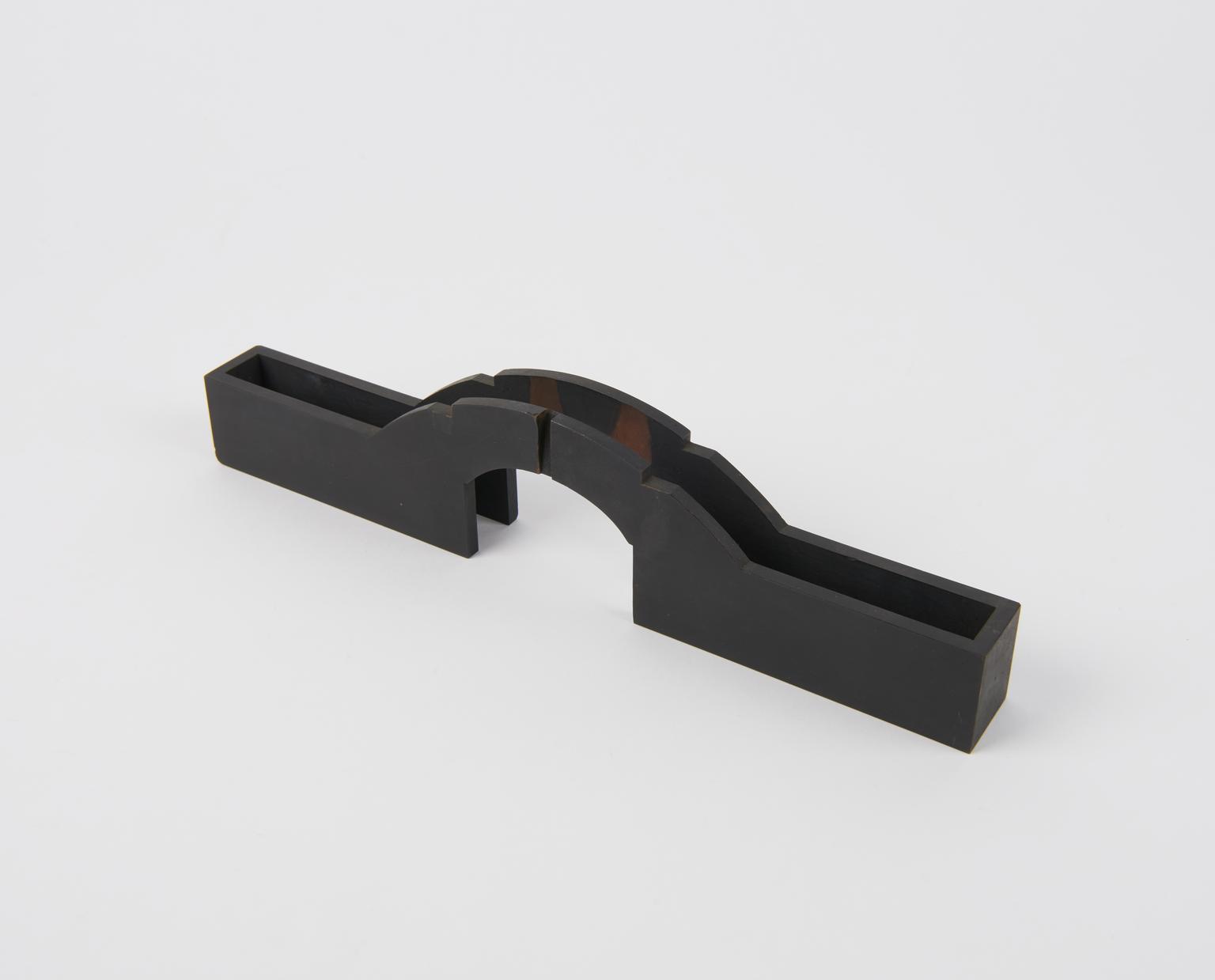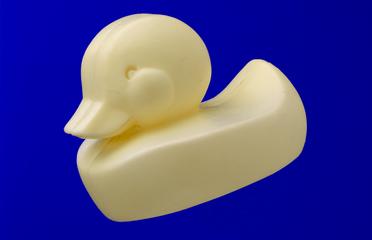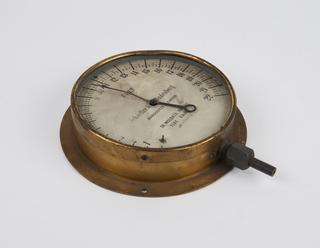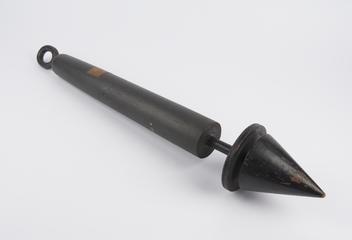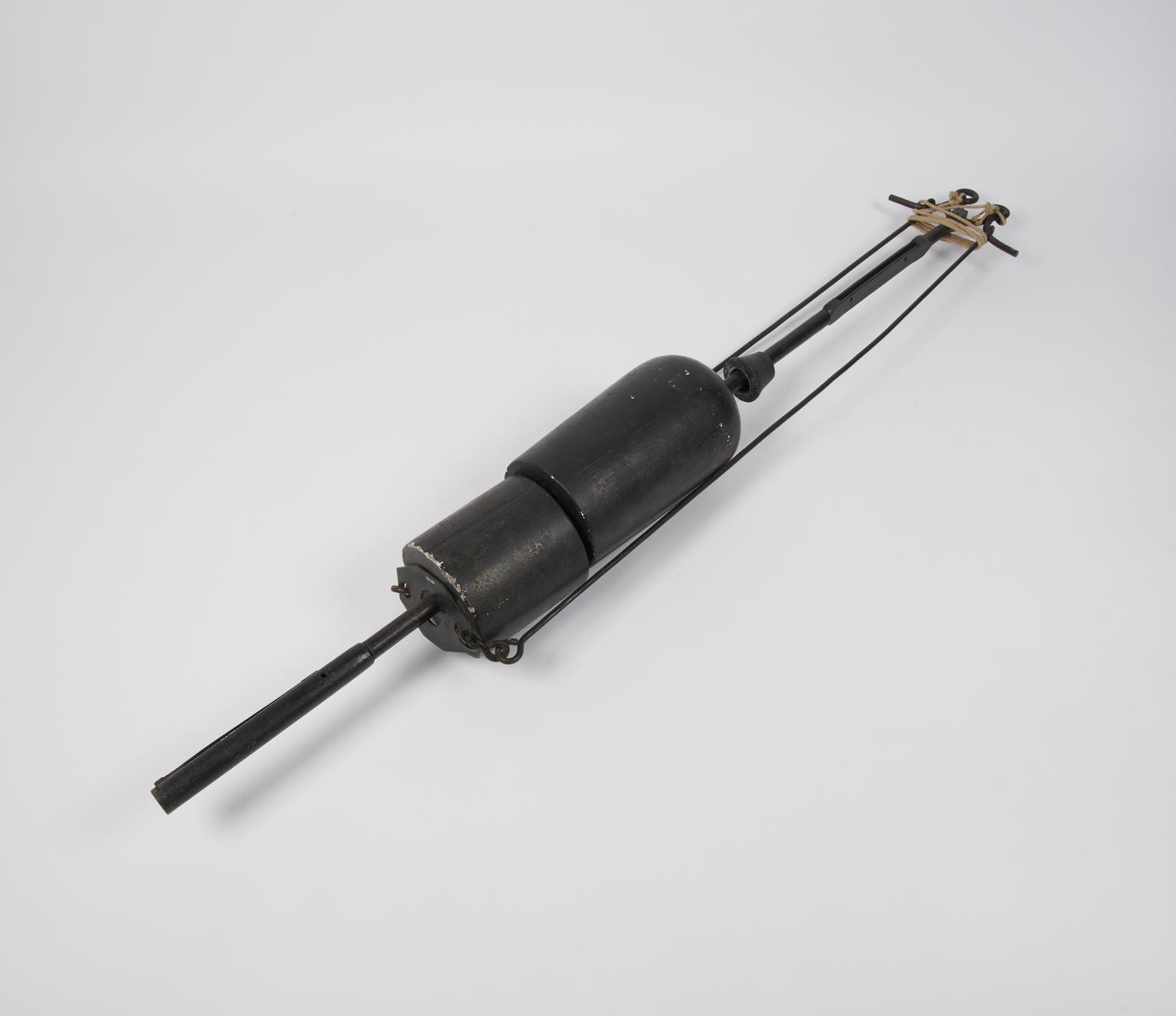
Detaching-weight sounder, or ‘Brooke’s Rod’, designed by Ensign Brooke
Detaching-weight sounder, designed by Ensign Brooke of the US Navy, USA, about 1856. Two blocks and other elements around a pole with some wire rods down the side and string at one end.
More
Submarine cable laying operations provided an impetus for the study of the ocean floor. It was not only important to obtain accurate measurements of the depth of the sea bed, but also samples of the ground over which cables were to be laid, and sea bed temperatures (which affected the insulating properties of the gutta percha insulation of cables, and thus signal transmission times).
In 1852, midshipman Ensign Brooke of the US Navy found an ingenious method of detaching at the bottom the weight used to take down a sounder. By this means, a light sampling tube accompanying the weight might be hauled up without breaking the line. The idea was by no means new, but had not been made practical in deep water.
Brooke’s sounder used as its weight a cannon ball bored through the centre and grooved on the outside. It rested on a ring suspended by cords passing along the grooves to a pivoted hook on the bracket to which the sounding line was spliced. The base of the sounder shaft was hollow and contained goose quills. The weight of the cannon ball drove the shaft into the sediment, water escaping from the upper part of the shaft via a leather flap-valve. Sediment was forced into the quills. As the device hit the sea bed, the line slackened, the bracket pivoted, releasing the cannon ball harness. On hauling up, ball and harness were left on the bottom, greatly reducing the weight to be lifted to the surface.
One of the disadvantages of Brooke’s sounder was the small quantity of sediment recovered. Also the delicate adjustment of the weight sometimes resulted in its dislodgement before reaching the sea bed, though Brooke himself overcame this by substituting a single hook for the two which he had originally employed.
- Object Number:
- 1876-833/1
- type:
- mechanical sounder
- Image ©
- The Board of Trustees of the Science Museum
